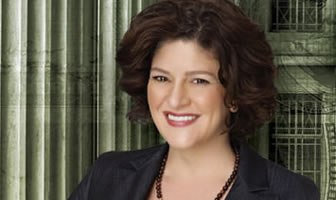Tequila Shots, Default Interest, and the 9th Circuit’s Reversal of In re Entz-White
The following is a guest post by frequent Pincus Pro Ed speaker on bankruptcy topics, Mette Kurth of Fox Rothschild, LLP. You can see her blog – The Bottom Line 11 – here.
Friday night I hosted a Día de los Muertos party. Naturally, I invited other bankruptcy attorneys. And when you mix lawyers and tequila, things can get pretty crazy. It wasn’t long before someone was well into an animated story about his Absolutely Worst Day Ever as a Lawyer. Now that its Monday morning and we’ve all sobered up, here’s a recap of his Very Bad Day and the surprise reversal of In re Entz-White that caused it.
Last Week, Debtors Could Avoid Accrued Post-Default Interest in the 9th Circuit by Curing an Underlying Default…
My friend (let’s call him “Roberto”) was representing a debtor that had fallen behind on its loan and was facing insurmountable default interest. If it could avoid the default interest and other late penalties, it could otherwise cure its defaults, restore its loan to its original terms, and successfully reorganize. “No problem!” Roberto had said. And he took the case on a contingency.
Roberto was right. In re Entz-White Lumber & Supply, Inc., decided back in 1988, held that when a debtor cures a default it may avoid all consequences of the default, including higher post-default interest rates. In other words, it may both repay arrearages at the lower, pre-default interest rate and return to pre-default conditions, including pre-default interest rates, for the remainder of the loan obligation.
Mechanically, it works like this. Section 1123(a)(5)(G) of the Bankruptcy Code requires that a debtor’s plan of reorganization adequately provide for its implementation, including by “curing” any default. The Bankruptcy Code contains a long list of definitions. Oddly, “cure,” used throughout the Bankruptcy Code, is not one of them. To fill in that gap, the Ninth Circuit adopted the Second Circuit’s definition of cure, e.g., curing a default means taking care of the triggering event, thereby nullifying all of its consequences, including default penalties such as higher interest.
Roberto had relied on Entz-White in charting a path forward for his client. The case was on the verge of confirmation, and he was on the verge of earning his contingency fee.
…. But on Friday, the 9th Circuit Issued a New Opinion Overturning Its Prior Ruling
On Friday, instead of celebrating, Roberto was shooting tequila in my living room and crying into his cerveza.
In In re New Investments, decided earlier that day, the Ninth Circuit overturned its opinion in Entz-White, holding that Bankruptcy Code Section 1123(d) voided Entz-White’s rule that a debtor who proposes to cure a default may avoid a higher, post-default interest rate in the loan agreement. The Ninth Circuit reversed the bankruptcy court’s underlying order, which had confirmed a Chapter 11 plan based on Entz-White… and simultaneously upended my friend’s pending case as well.
Section 1123(d), which was enacted in 1994, well after Entz-White was decided, states that:
Notwithstanding subsection (a) of this section and sections 506(b), 1129(a)(7), and 1129(b) of this title, if it is proposed in a plan to cure a default the amount necessary to cure the default shall be determined in accordance with the underlying agreement and applicable nonbankruptcy law.
Following is a brief summary of the case and the court’s rationale.
1. Evaluating Applicable (Washington State) Nonbankruptcy Law
In New Investments, the debtor had defaulted on a real estate loan, thereby triggering a default-interest provision. It then filed for bankruptcy protection to avoid foreclosure. Its plan was to sell its property and then use the sale proceeds to payoff the loan – thus curing the default – at the pre-default interest rate. The lender objected, pointing to its contractual rights under a promissory note that called for payment of a higher interest rate (equating to approx. $670,000) upon default. The loan agreement was governed by Washington state law. The Ninth Circuit concluded that Washington allows for a higher interest rate upon default when provided for in the loan agreement. See Wash. Rev. Code Ann. Section 61.24.090(1)(a). Thus, it held that cure, as determined under the parties’ contract and applicable state law, required payment of accrued default interest.
2. The Plain Language of Section 1123(d) Drives the Ninth Circuit’s Decision
The Ninth Circuit stated that the plain language of Section 1123(d) compelled its decision. As with all plain-language arguments, there is nothing to analyze here. You can read Section 1123(d) and decide for yourself whether you agree.
3. Surprise! The Legislative History Indicates This Result May Be Unexpected
In case you disagree with the Court’s plain reading of the statute, the Ninth Circuit also looked to the statute’s legislative history and stated it would not help New Investments. Essentially, the Ninth Circuit concluded that Congress had a very particular, and different, purpose in mind when it enacted Section 1123(d) and that it may not have anticipated all of the statute’s consequences. But that, it said, is not a good enough reason to ignore the statute’s plain meaning.
What was Congress trying to do when it enacted Section 1123(d)? The legislative history indicates Congress was primarily concerned with overruling the Supreme Court’s decision in Rake v. Wade, which had stated that, in order to cure a default, a Chapter 13 debtor would have to pay interest on his arrearages even if the underlying loan agreement did not provide for it. Congress was concerned that Rake v. Wade provided an unbargained-for windfall for creditors and enacted Section 1123(d) to “limit the secured creditor to the benefit of the initial bargain.” Congress, the Ninth Circuit acknowledged, may not have anticipated how Section 1123(d) would be interpreted in other contexts.
But the Ninth Circuit felt that its holding, if unanticipated, would not be inconsistent with Congressional intent. In holding the secured creditor to the benefit of its bargain, Congress had said that a cure pursuant to a plan should “put the debtor in the same position as if the default had never occurred.” That, it said, is consistent with holding both parties to the benefit of their bargain and with the concept of cure generally (which it conceeded Section 1123(d) did not alter or attempt to define).
The Ninth Circuit tacitly recognized that its holding will make it more difficult for some debtors to reorganize, undermining the Bankruptcy Code’s goals of offering a fresh start to honest debtors. But it felt that its decision strikes an appropriate balance between the interest of debtors and creditors.
4. The Interpretation of Cure in Section 1123 is Consistent With the Concept of Unimpairment
The Ninth Circuit also stated that its ruling in New Investments would be consistent with the concept of unimpairment under the Bankruptcy Code. To render a creditor “unimpaired” such that it cannot object to a debtor’s plan, the debtor must cure defaults and may not “otherwise alter the legal, equitable, or contractual rights” of the creditor. One of these rights is post-default interest.
Future Default Interest Differentiated
It is worth noting that the New Investments decision focuses on the treatment of accrued, default interest when a debtor is calculating required cure amounts. But once default interest or other penalties are paid and a default is therefore cured, the debtor can still return to pre-default conditions as to the remainder of the loan obligation.
Judge Berzon’s Dissenting Opinion
In a dissenting opinion, Judge Marsha S. Berzon wrote that neither Section 1123(d) nor any other provision of the Bankruptcy Code provides a definition of “cure” contrary to the one announced in Entz-White.
As for the majority’s conclusion that Congress displaced Entz-White when it passed Section 1123(d)? Judge Berzon argues at length that this conclusion is not supported by either the plain language of the statute or its legislative history. Instead, Judge Berzon argues that the Court should not read the Bankruptcy Code to erode past bankruptcy practice absent a clear indication that Congress intended such a departure.
My friend Roberto would certainly agree.
By: Mette Kurth of Fox Rothschild, LLP


